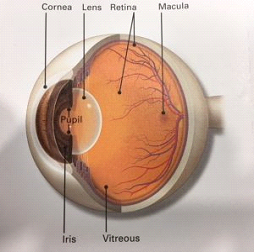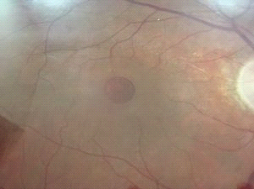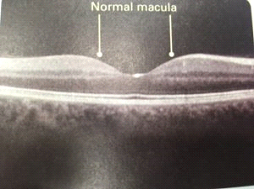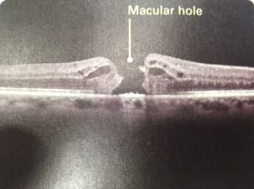Macular Hole
What is a macular hole?
Macular hole is when a tear or opening forms in the macula, the central part of your retina responsible for providing fine visual detail. As the hole forms, your central vision will look blurry, distorted or wavy. As the hole grows a dark shadow appears in the center of your vision. A macular hole does not affect your peripheral vision.
What causes a macular hole?

Age is the most common cause of macular hole. As you get older the vitreous jelly turns to liquid and shrinks and subsequently begins to pull away from the retina. Usually the vitreous separates away from the retina with no problems. But sometimes it may be too stuck to the central aspect of the retina called the macula. As it detaches further away it exerts traction and a subsequent macular hole forms.
Sometimes the macular hole can form when the macula swells from other eye disease. Or it can be caused by an eye injury, that induces the vitreous to be abruptly shaken that ends up yanking-up a piece of macula with it.
How is a macular hole diagnosed?
After dilating your eye, the retina is examined using a special lens and equipment. Your physician will then take special pictures of your eye using optical coherence tomography (OCT). With OCT, a machine scans the back of your eye. This provides very detailed pictures of the retina and macula.
Picture of a macular hole

How is macular hole treated?
Surgery called vitrectomy where the vitreous gel is removed from the eye is the best way to treat a macular hole. After the vitreous is removed the vitreous cavity is filled with a temporary gas bubble. The bubble helps seal the macular hole. The surgery requires face-down positioning afterwards to allow the gas bubble to constantly apply pressure against the hole to help it close.
The rate of hole closure has improved to 90 percent or greater. Dr. Calderon’s rate of success for closing macular holes is 100%. As with any surgery, there are surgical risks. These risks include cataract formation, retinal tears and detachment, failure of hole closure and infection or bleeding in the eye. With these relatively low risks, many patients elect to proceed with surgery with a realistic expectation of better vision when the repair is performed in a timely fashion.
Without treatment, the blind spot caused by the macular hole usually enlarges, and most patients’ ultimate visual acuity is 20/400 or worse (the size of the big “E” on the eye chart.) Macular holes rarely close without surgery. There is also approximately a 9 to 10 percent chance of a hole forming in the opposite eye with time.
Macula on OCT scan
Healthy Macula

Macular Hole on OCT scan

Things to know about vitrectomy surgery
Macular hole surgery is done as an outpatient procedure and usually can be performed in one hour or less. The gas bubble that is inserted into the vitreous cavity is slowly reabsorbed into the bloodstream over a period of 2 to 8 weeks, depending on the concentration of gas that is used by the surgeon.
The eye refills itself with a watery fluid as the gas bubble is reabsorbed. The eye does not make more vitreous gel. While the gas bubble is in the eye air travel is prohibited as well as use of inhaled nitrous oxide (commonly used by dentists as “laughing gas”) as either of these factors will cause the gas in the eye to expand, often leading to pain and possible blindness.
You must keep your face down or in a certain position at all times for up to a week, but maybe longer, after vitrectomy surgery. This is to keep the gas bubble in place. To assist patients with the face-down positioning, there are positioning aids that may be rented from specialty companies. Ask your doctor for this contact information.
The most common side effect of macular hole repair is cataract formation that often requires surgery within 6 months of the macular hole repair.
What happens to the gas bubble?
The gas bubble will slowly be absorbed by the body. It may persist in the vitreous space for as long as eight weeks dependent on the type of gas used.
When can I travel by air?
Generally, you should not fly in an airplane until the bubble is completely gone. This is because changes in altitude can make the gas bubble expand.
What are vitrectomy surgery risks?
Like all surgery, vitrectomy surgery has risks. They include:
Cataract progression/formation: If you have not had cataract surgery, you will likely develop a cataract and may need surgery in the next 6 to 12 months. Statistics show that over 90% of patients that have their natural lens (have not had cataract surgery) and undergo vitrectomy surgery require cataract surgery within 2 years of having vitrectomy surgery.
